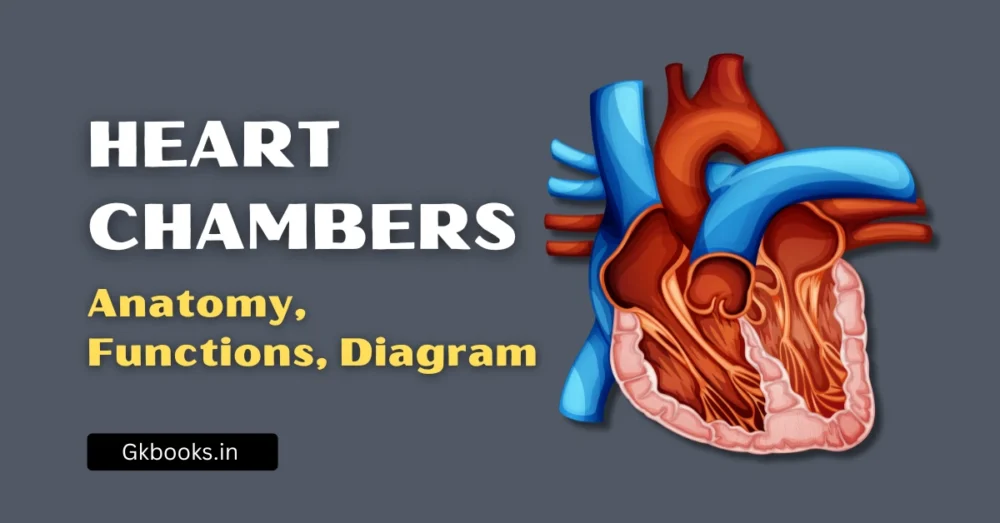The human skull is one of the most important structures in the body. It protects the brain, supports the face, and plays a key role in eating, speaking, and breathing. Understanding the skull is essential for competitive exams like SSC, RRB NTPC, UPSC, and state-level exams. Let’s break down its structure in a simple and easy-to-understand way!
Note: This topic is from the ‘Locomotion and Movement’ chapter 17 of Class IX NCERT.
What is the Skull?
The skull is a bony structure that forms the head. It is made up of 22 bones that are fused together, except for the lower jaw (mandible), which is movable.
Functions of the Skull
- Protects the brain from injuries
- Gives shape to the face
- Supports the eyes, nose, and mouth
- Helps in chewing and speaking
Parts of the Skull
The skull is divided into two main parts:
- Cranial Bones (protect the brain)
- Facial Bones (form the structure of the face)
1. Cranial Bones (8 Bones)
The cranial bones form the cranium, which houses and protects the brain. There are 8 cranial bones:
| Bone Name | Location | Function |
|---|---|---|
| Frontal Bone | Forehead | Forms the front part of the skull |
| Parietal Bones (2) | Top and sides of the skull | Protect the upper brain |
| Temporal Bones (2) | Sides of the skull, near ears | Supports the ear structure and helps in hearing |
| Occipital Bone | Back of the skull | Protects the back part of the brain |
| Sphenoid Bone | the Base of the skull | Connects different skull bones |
| Ethmoid Bone | Near the nose and eyes | Supports the nasal cavity and eye sockets |
2. Facial Bones (14 Bones)
Facial bones give shape to our face and help in important functions like chewing and breathing. There are 14 facial bones:
| Bone Name | Location | Function |
|---|---|---|
| Nasal Bones (2) | Bridge of the nose | Supports the nose structure |
| Maxilla (2) | Upper jaw | Holds upper teeth and forms part of the nose and eye sockets |
| Zygomatic Bones (2) | Cheekbones | Give shape to the cheeks |
| Mandible (1) | Lower jaw | Helps in chewing and speaking (only movable skull bone) |
| Lacrimal Bones (2) | Near the eyes | Supports the tear ducts |
| Palatine Bones (2) | The Back part of the roof of the mouth | Helps in forming the nasal and oral cavities |
| Inferior Nasal Conchae (2) | Inside the nose | Helps in airflow and filtering air |
| Vomer (1) | Center of the nasal cavity | Forms the lower part of the nasal septum |
◾Must-See! Human Skeletal System: Detailed Diagram, Key Parts, Vital Functions & Surprising Facts!
Important Features of the Skull
- Foramen Magnum – A large hole at the base of the skull where the spinal cord connects to the brain.
- Sutures – Joints that fuse skull bones together (e.g., coronal, sagittal, and lambdoid sutures).
- Orbit – The socket where the eye is placed.
- Sinuses – Air-filled spaces in the skull that reduce weight and help in voice resonance.
Interesting Facts About the Skull
- Babies have more bones (around 44) in their skull at birth, which later fuse into 22 bones as they grow.
- The skull has no moving joints, except for the mandible (lower jaw).
- The human skull is strong but lightweight, designed to protect the brain without being too heavy.
- Some birds and animals have a thicker skull to protect themselves from predators.
Conclusion
Understanding the anatomy of the human skull is important for both general knowledge and competitive exams. The skull is not just a protective structure but also plays a crucial role in speaking, breathing, and facial expressions.
Quick Revision Points
✅ The skull has 22 bones (8 cranial + 14 facial)
✅ The mandible is the only movable skull bone
✅ Cranial bones protect the brain, and facial bones shape the face
✅ The foramen magnum connects the brain to the spinal cord
✅ Sutures are joints that fuse skull bones together
Keep studying and stay motivated! 💡 The more you learn, the better prepared you are for your exams. Happy learning! 😊






